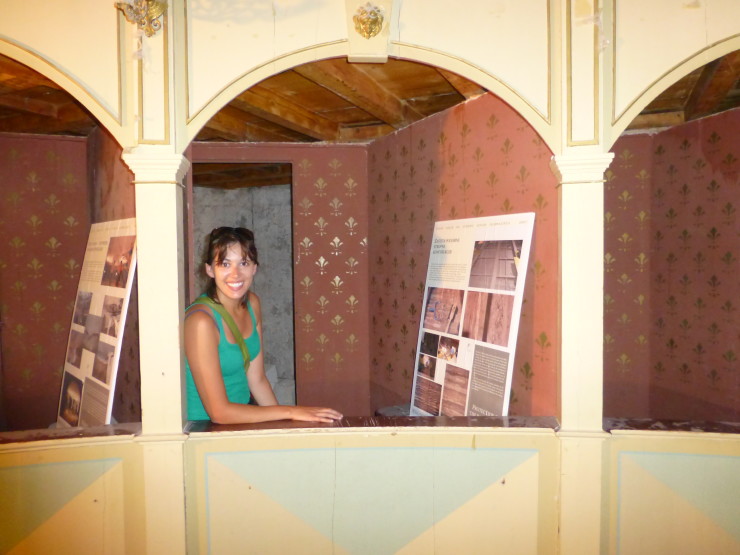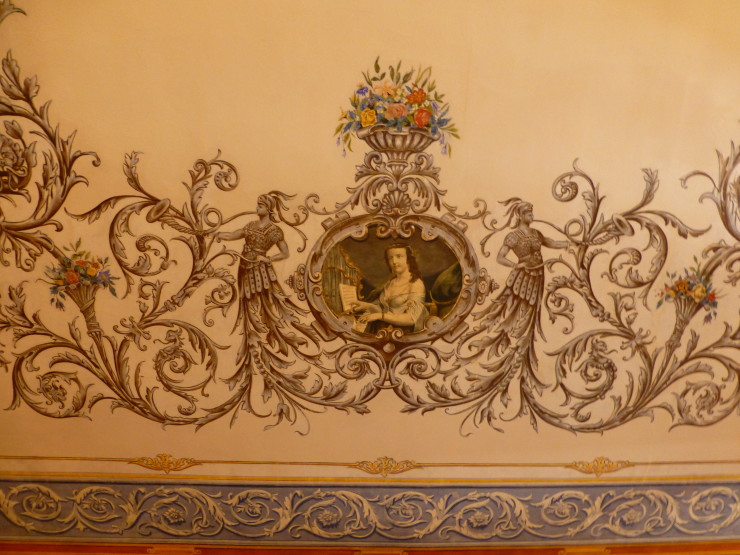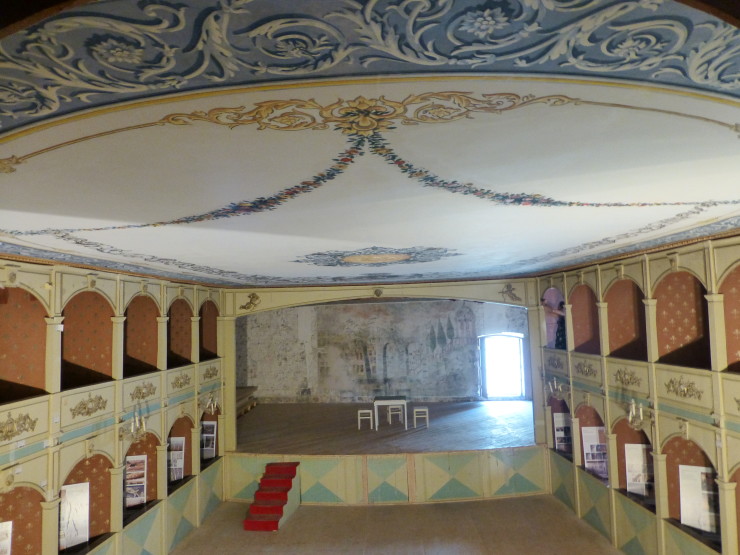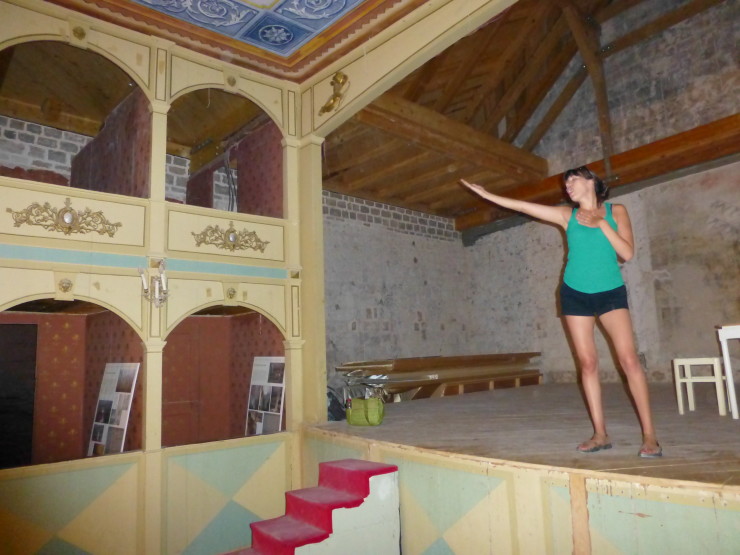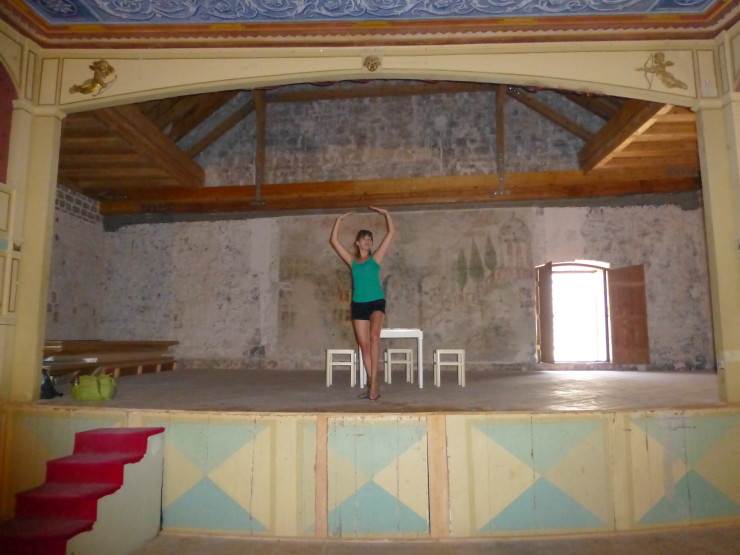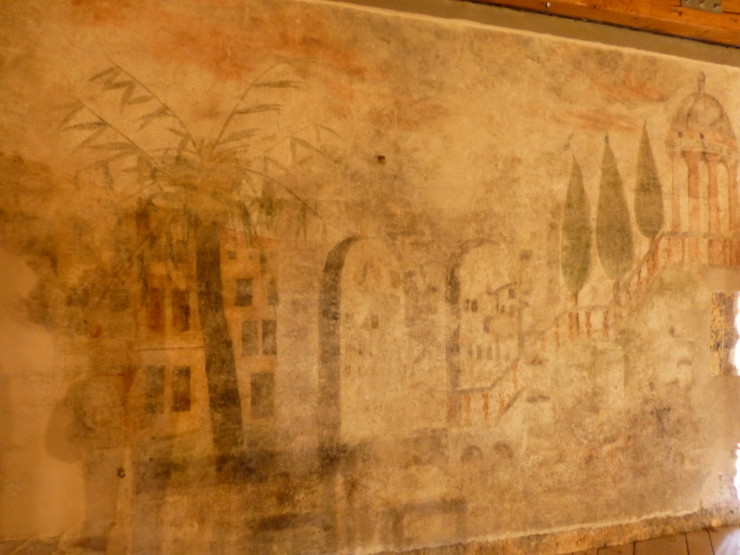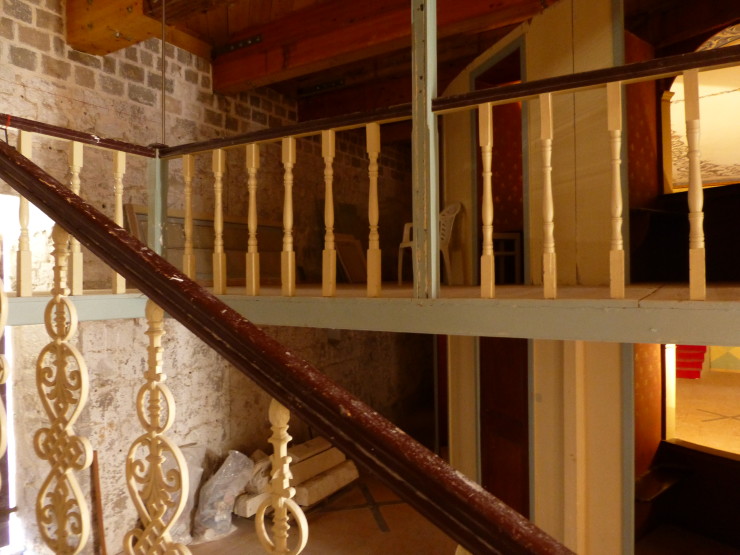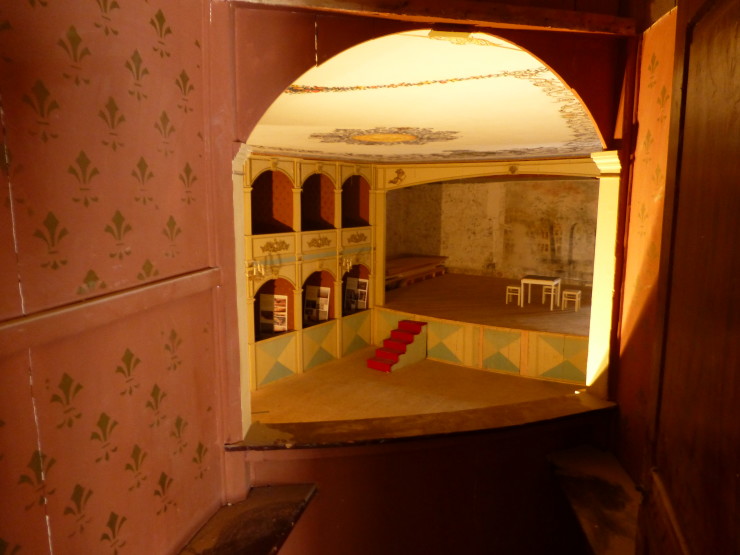Europe’s first public theatre is easy to miss, but here’s why you don’t want to overlook it when visiting Hvar, Croatia
I don’t remember how I happened to have learned about the Hvar Public Theatre before visiting the island of Hvar, Croatia, but I’m glad I stumbled upon it during my day exploring Hvar.
When I walked into the old theater with my sister, Ang, it became clear not a lot of other people had heard of it either because we were the only ones there.
The aloof teenager in the adjacent room had taken our 10 KN, but besides that, it was just Ang, me and a 200-year old stage.
And a staircase with no rope.
“We can go up there, right?” I asked. The staircase that mirrored this one on the opposite side of the room had a thick rope covering it, but no such rope was over on this side.
Ang and I had already explored what had once been the main seating area and read the informational posters propped in each of the box seat sections around the perimeter that talked about the history of the theatre and the restoration it was currently undergoing.
We learned the theater was built in 1612 and had the unique distinction of being open to citizens of all social status. This was unheard of at the time in Europe and as a result, the Hvar Public Theatre became the first public theater in Europe.
We also learned more about the painstaking restoration work and the progress that had been made, such as with the Girl Playing an Organ painting, located on the medallion on the eastern part of the ceiling. The work of art had originally been painted on paper and glued to the ceiling. This obviously did not hold up well and has been restored to look close to its original prominence again.
Despite being under restoration, the theatre hasn’t lost its allure. In fact, its slightly undone look actually helps to transport you back hundreds of years. I got a good feel for what it would have been like to attend a show there in the 17th century.
The lack of other people touring the theater (still a big fat zero twenty minutes after we arrived) meant we were able to put on our own show and have fun with the accessible stage area.
The back of the stage is especially interesting as it still has some of the original fresco from 1819 on it.
So…as I mentioned, we had explored the main floor of the theatre quite extensively and were now staring at the staircase.
“I don’t see why we can’t go up. There’s no rope,” Ang replied in response to my question on if we could ascend the stairs.
I agreed and up we went.
In retrospect, maybe we should have been a bit more hesitant and concerned about, you know, falling through the floor or something, and checked with the boy at the entrance if it was safe. We were in an old building after all! But the footprints on the ground and the fingerprints in the dust we saw up there made us continue to think it was safe and open to visitors, so we kept exploring.
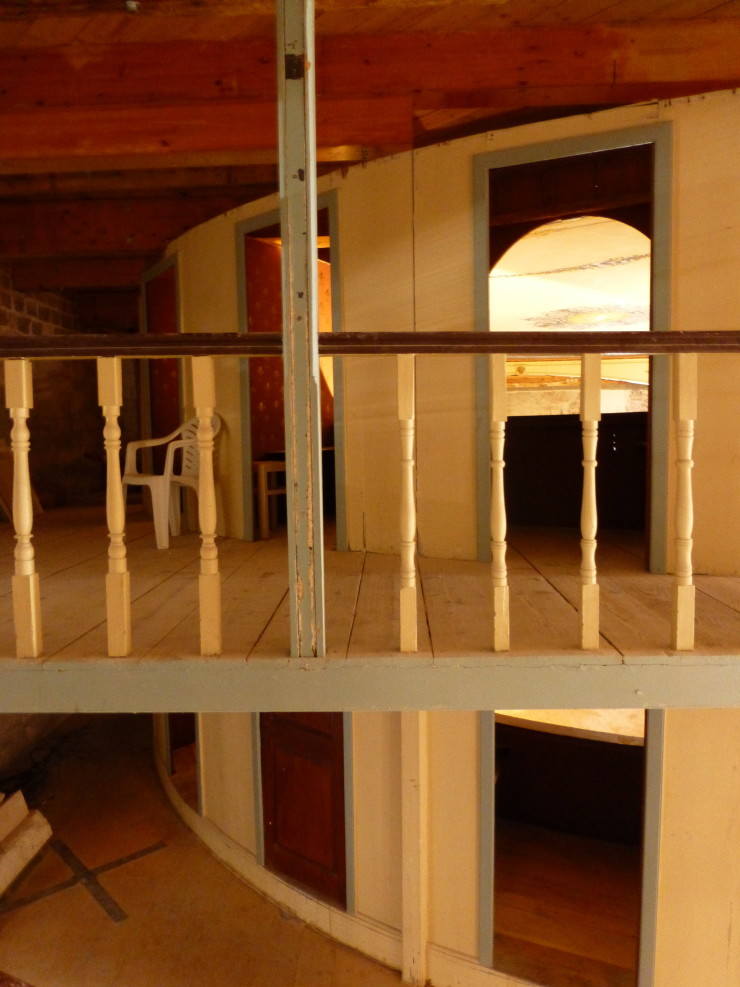
Luckily we didn’t smash through any old beams or topple over a banister, and exploring the upstairs and downstairs of Hvar Theatre became one of my most favorite travel experiences ever.
It is so rare traveling in Europe in the summer to have a historic building ALL TO YOURSELF that we wanted to soak up every corner of it.
What we originally figured would be a quick 10-minute visit to the theater ended up turning into an hour visit, mostly because we wanted to take advantage of the history…and the quietness.
We were in Hvar with our mom and other sister who spent the day by Podstine Hotel’s sea terrace, and when we got back to the hotel we told them they had to check out Hvar Theatre before leaving the island. They went the next evening and reported back that there were a few other people there so wasn’t quite the same ambiance Ang and I had – though I was glad to hear people actually were aware of this special place in Hvar.
“Did you go upstairs?” I asked.
“We couldn’t. There was a rope,” mom answered.
Ang and I exchanged a look.
Oops. Well, at least we didn’t fall through the floor!
Visiting Hvar Theatre Quick Tips
You may not be able to go upstairs, but the Hvar Theatre is definitely still worth some of your time while in Hvar.
Address: Arsenal Building, Trg Svetog Stjepana (the southern side of St Stephen’s Square)
Hours: Open daily from 8 a.m. – 10 p.m.
Cost: 10 Kn
